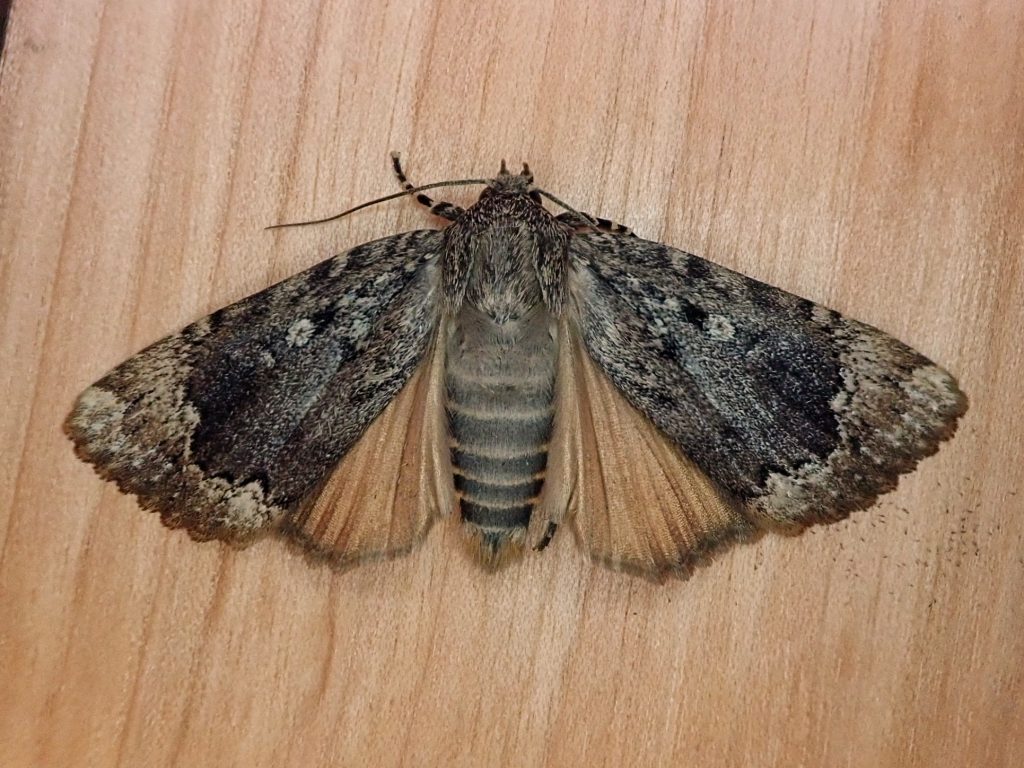
This was a fun moth to find today, about 14 months after finding my first Copper Underwing Moth, since I seldom find nocturnal moths in the daytime. That first one was also found in this general location, a bluff on the north side of the Columbia River Gorge, but it came to UV lights I had packed in alone, after dark, about a 1/4 mile from the road.

This time I was with my wife. Today was the first time we have hiked at Cape Horn together since we got married there, at an overlook just off the main trail, 16 months ago. And hiked is a bit of a misnomer. It was a nature stroll, during which I stopped frequently to poke around under logs and leaves, and to photograph interesting life forms, while Pam soaked in the glorious bittersweet beauty of a perfect fall day in the Gorge.

Near the end of our adventure I noticed an alder snag with the bark sloughing off of it. And underneath that bark was this worn Amphipyra pyramidoides.
Unfortunately, due to it being faded and the eponymous copper underwing being hidden, I wasn’t sure it was pyramidoides. So, rather than photographing it in situ, I captured it before it could be startled into flight by the sudden light. And in the post refrigeration photo shoot it exposed a bit of the hidden glory of that coppery hind wing, and confirmed my identification.

There is really nothing else this can be mistaken for, if you can see the hind wing. However a faded specimen like this is superficially similar to other Amphipyra spp., and to some Aseptis spp. But it is larger than them (fw length 20-25 mm), and none of them have the combination of white orbicular spot and postmedial line obliquely angled forward to the costa, traits I couldn’t dredge up from the recesses of my mind when I saw this moth today.

The larvae are generalists and feed on maples, oaks, alder, willows and several other types of deciduous trees and shrubs. Adults fly from mid summer into mid fall. Eggs overwinter and hatch in the spring. It is, supposedly, a common species, and can be found region wide in mixed deciduous woodlands, although it is most common west of the Cascades.
Amphipyra is Greek for ‘around the fire’. I can’t seem to find out what that references. The species epithet pyramidoides refers to a ‘pyramid-like’ dorsal hump on the caterpillars.

https://bugguide.net/node/view/13299
http://mothphotographersgroup.msstate.edu/species.php?hodges=9638
Size- FW length 20-25mm
Habitat- Mixed deciduous woodlands
Range- Region wide in appropriate habitat; more common west of the Cascades
Eats- Larvae are generalists feeding on many deciduous trees and shrubs, including maple, oak, alder and willow
Flight Season- Mid July to mid October
